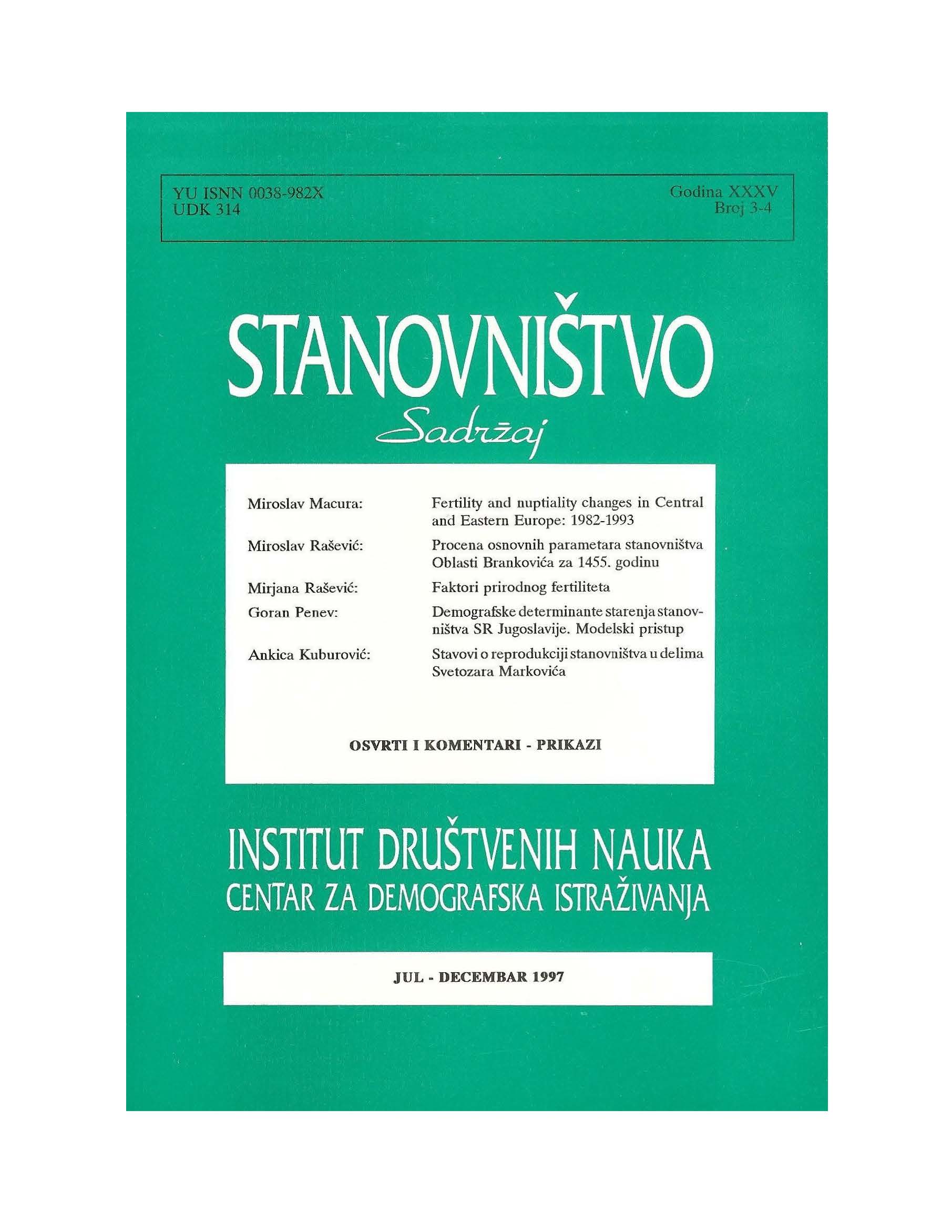Fertility and nuptiality changes in Central and Eastern Europe: 1982-1993
Main Article Content
Abstract
Central and east European countries are in the midst of a major demographic change, that for the most part appears to have been brought about by the on-going political, economic and social transformation of these countries. The strength of the change varies considerably across the counties, quite likely as a consequence of the variations in the depth and breadth of the transformation and the attitude of the people towards it. It appears that, at least, a few years will elapse before the demographers studying these countries will be able to draw a relatively comprehensive picture of the demographic developments in these countries since the turn of the 1980s. This paper seeks to contribute to this picture by documenting changes over time in fertility and first marriage in more than half of the transition countries, which appear to have been associated with the transformation under way. The analysis focuses on the time patterns in the levels and timing of overall fertility and first marriage among women during 1982-1993. It does not seek to explain how the various aspects of the transformation might have influenced those patterns; this would require a separate analysis. Having included in the analysis several years prior to the onset of the transformation, we seek to answer the following questions: What were the nature, timing and magnitude of the changes in overall fertility and first marriage, which are respectively measured by the period total fertility rate and the period total first marriage rate? Were the changes in first marriage accompanied by those in non-marital cohabitation? Although interesting in its own right, this question is addressed as a side issue due to data limitations, by looking at the proportions of extramarital births. And lastly, were the shifts in overall fertility and first marriage accompanied by those in their timing, as measured by the mean age of childbearing and the mean age at entry into first marriage, respectively? The analysis is cast within a broader European context by making comparisons between the countries with economies in transition and selected European countries with market economies.
Article Details

This work is licensed under a Creative Commons Attribution-NonCommercial 4.0 International License.
Published by the Institute of Social Sciences - Center for Demographic Research





